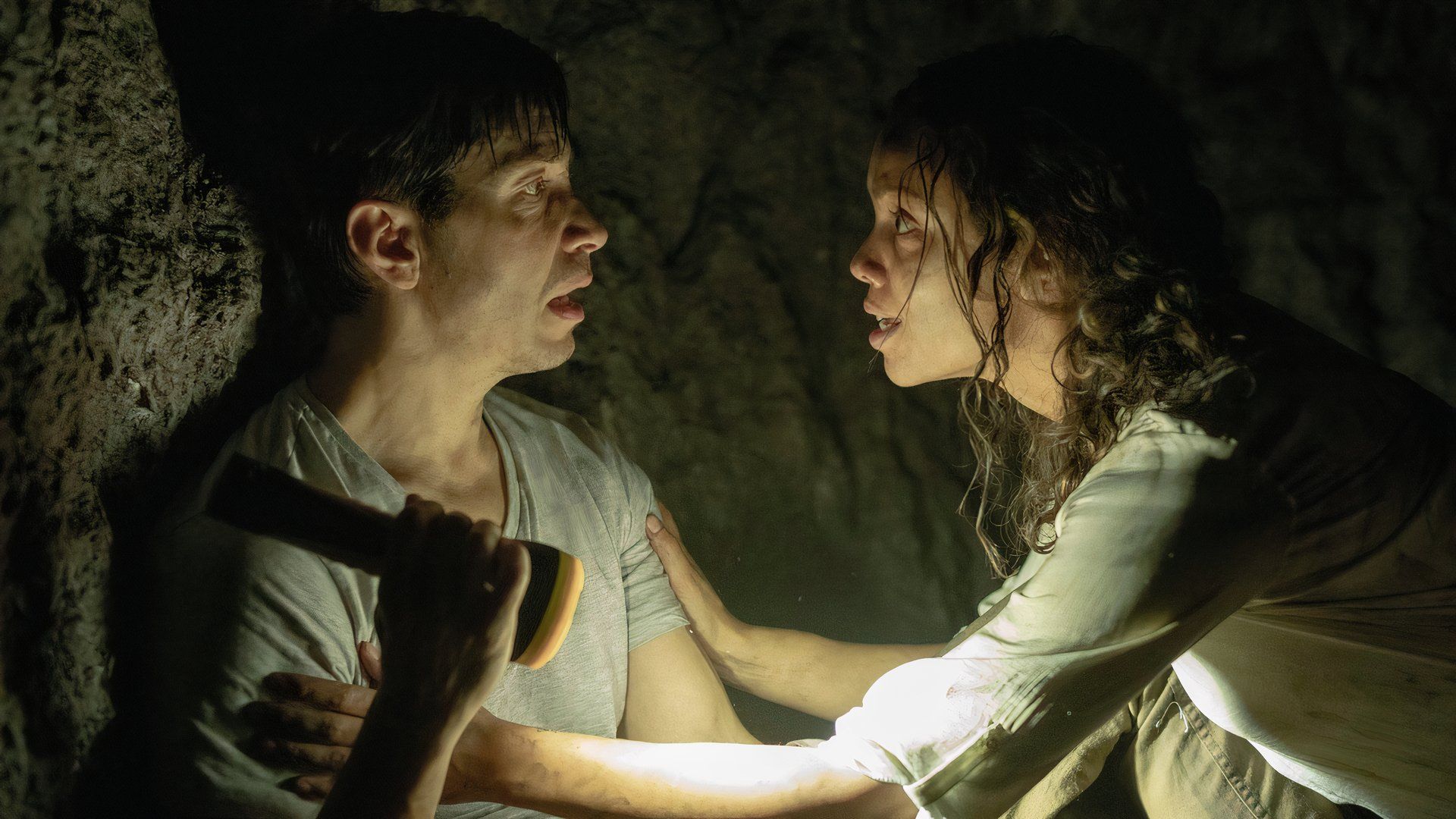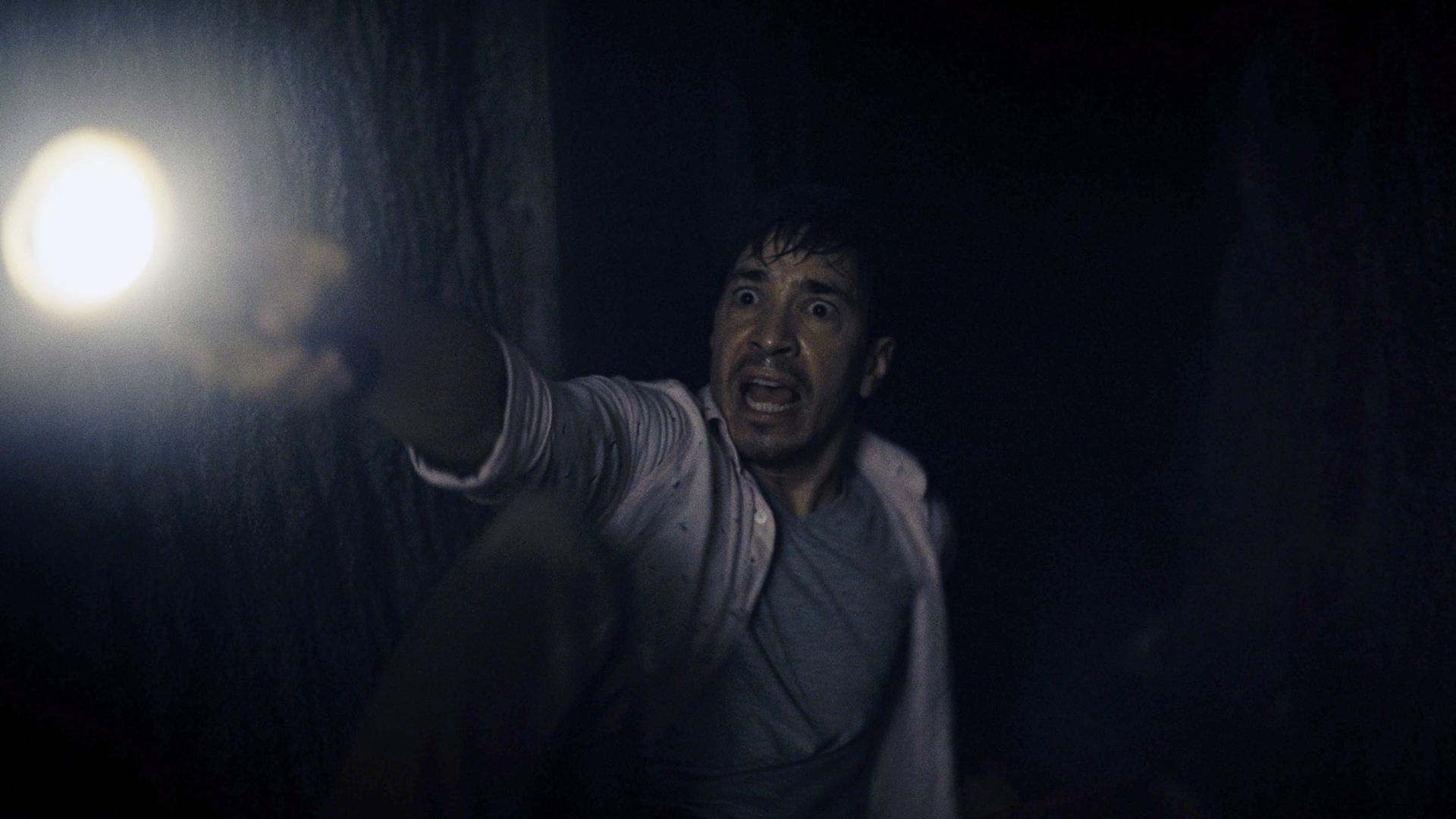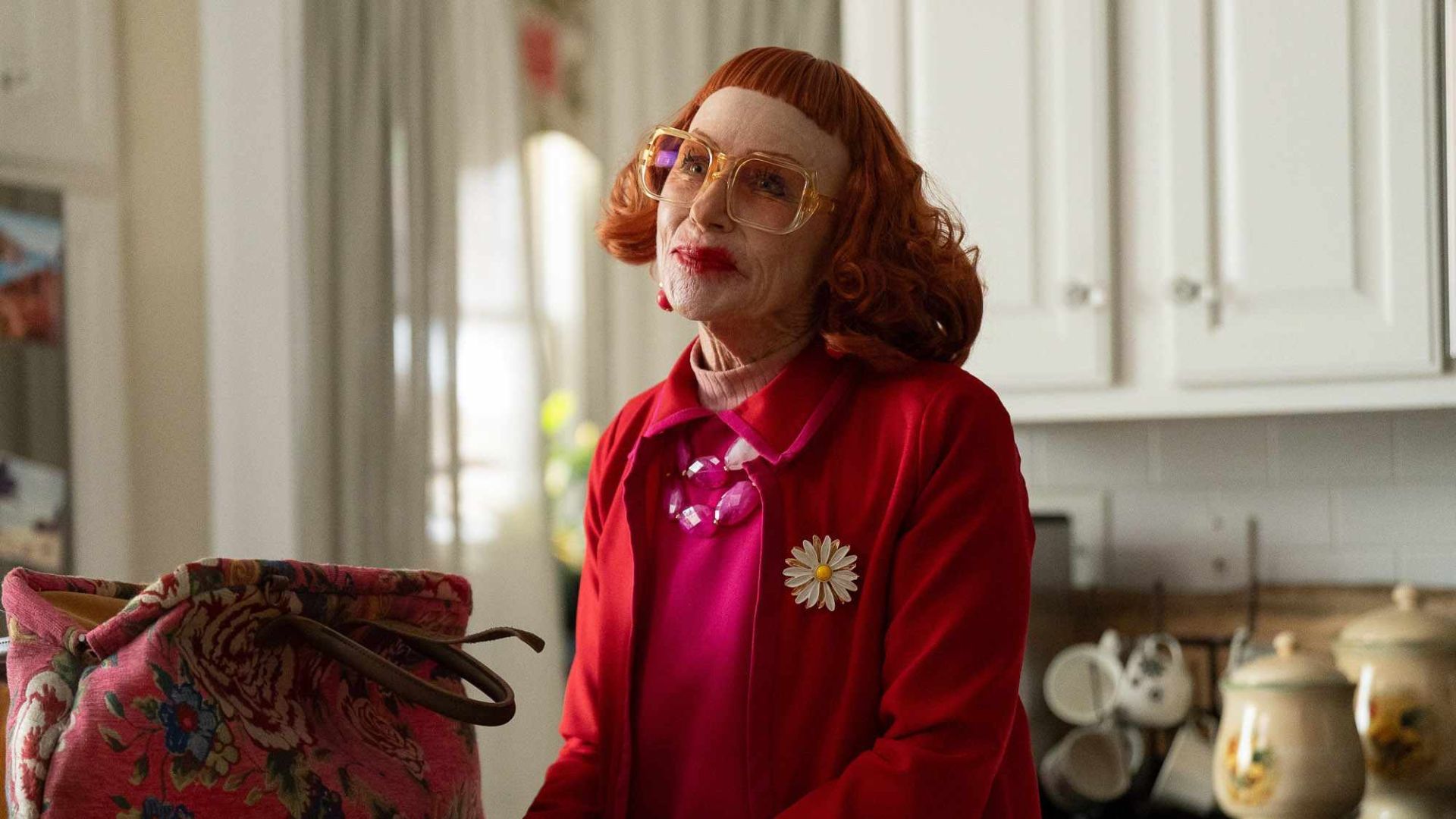
Released in 2022, Barbarian quickly became a standout horror film, offering something new in a genre known for its constant evolution. Like Jordan Peele, writer and director Zach Cregger blends humor with a genuine love for horror, resulting in a film that’s both scary and funny. It offers a thought-provoking look at modern dating, relationships between men and women, and the impact of the MeToo movement.
I was completely hooked by Barbarian, starting with Georgina Campbell as Tess. The movie begins with her arriving at a late-night Airbnb only to find another guest, Keith (Bill Skarsgård), is already there. For the first part of the film, I was on the edge of my seat, bracing for something terrible to happen because of this stranger. But wow, things took a turn! They both stumble upon a truly horrifying secret hidden beneath the house – something far worse than either of them, or honestly, I could have imagined. It really makes you wonder, what is the real monster in this movie, and what will it take to finally stop it?
What Happens at the End of ‘Barbarian’?

20th Century Studios
Tess’s biggest strength in the story, her compassion, also creates problems for her. She fundamentally believes in helping others, even when it’s risky. For example, she follows Keith into a dangerous basement because she feels for him. After escaping, her first priority is finding help for the man left behind. When the police can’t assist, she stays to handle the situation herself, ultimately defeating the villain and rescuing AJ. However, their escape isn’t complete, as the villain reappears and chases them onto the water tower.
AJ makes the selfish decision to save himself by throwing Tess off the water tower. The Mother dives after her, catching Tess to cushion her fall. Enraged that AJ tried to harm her “baby,” the Mother then brutally attacks him, gouging out his eyes and killing him immediately.
Unlike typical horror films where the survivor defeats the monster with force, Barbarian takes a different approach. The heroine doesn’t fight the monster; she understands it. Tess isn’t destroying a villain, but ending the suffering of a creature born from trauma. When Tess kills ‘The Mother,’ it’s an act of compassion, not revenge, and the audience feels sympathy for this disfigured woman who simply craved a child to nurture.
Who Is the Monster in ‘Barbarian’?

20th Century Studios
At first glance, the Mother appears to be the terrifying creature the story implies – violent, disfigured, and a killer haunting the abandoned streets of Brightmoor. However, Tess sees something more beneath the frightening exterior. We eventually discover that this seemingly monstrous being is also a victim herself.
The movie jumps from when AJ first encounters Tess to a flashback: the 1980s. We’re introduced to Frank (Richard Brake), who owns the house on Barbary Street, and see his neighborhood in Brightmoor looking much more prosperous than it does in the present day. Everything appears to be going well, and Frank’s home is a good example of that.
Beneath the seemingly perfect exterior of the house – the neat lawn and fresh paint – lie disturbing secrets that are only now coming to light. Through flashbacks, we discover the horrifying truth: Frank is the true villain, responsible for kidnapping and holding women captive. The full extent of his cruelty is tragically represented by the Mother, a woman born from decades of incest and abuse.
How ‘Barbarian’ Makes a Bigger Monster Out of Men

20th Century Studios
Although Frank is presented as a terrifying villain in Barbarian, the film suggests he isn’t alone in his monstrous behavior. It deliberately draws parallels between Frank and AJ, exposing the deep-rooted evil of patriarchal thinking and the desire for dominance. Both men see women as objects to be used and discarded, but AJ hides this behind a facade of politeness. For example, AJ repeatedly insults the actress who accused him after the allegations surfaced, even admitting to the wrongdoing. Throughout the film, he refuses to take responsibility for his actions and never truly does.
The contrast between AJ and Frank is striking. Initially, AJ sees himself as another victim of the powerful ‘Mother,’ just like Frank. However, as he learns just how awful Frank truly is, AJ attempts to distance himself. But he consistently fails to recognize the similarities between his own beliefs and those of Frank, and how his behavior actually fuels harm and silences women. It makes you wonder what would have happened to him in an older Hollywood era, where he wouldn’t face consequences for his terrible actions.
Let me tell you, after watching ‘Barbarian,’ I’m left with a really unsettling feeling about AJ. He constantly tells everyone he’s a good guy, but his actions scream otherwise – especially when you see him shoot Tess after she tries to help him! It’s infuriating. Even after pushing her off that water tower, he tries to explain himself, as if we didn’t just witness a completely cold and calculated act. The film really drives home a disturbing point: the true monsters in ‘Barbarian’ aren’t supernatural, they’re men. And it doesn’t just stop at individual bad guys like Frank and AJ; the movie cleverly examines why these men are the way they are, and the systems that allow and even encourage this kind of behavior. It’s a deeply unsettling and thought-provoking film.
Zach Cregger’s ‘Weapons’ Shed Some Light on ‘Barbarian’

Warner Bros. Pictures
Though Barbarian powerfully criticized male dominance and its resulting violence, Zach Cregger’s new film, Weapons, has sparked debate. Some viewers are questioning whether Weapons is as meaningful as Barbarian, and it’s receiving criticism for using and even strengthening harmful gender stereotypes. The character of Gladys, in particular, has been criticized as a step backward, reminiscent of older, often problematic horror tropes featuring villainous older women.
Many viewers feel Justine Gandy’s storyline in Weapons (played by Julia Garner) didn’t live up to its potential. While her experience of being blamed by her community touches on issues of gender and power, it doesn’t explore these themes as fully or emotionally as Tess’s story in Barbarian. The characters of Gladys and Justine in Weapons aren’t necessarily reasons to rethink Barbarian, but some argue that audiences may have overvalued the social commentary in Barbarian, while Weapons handled similar topics less effectively, and perhaps even exploited them, especially with the character of Gladys.
I’m continually impressed by Zach Cregger’s talent; he really knows how to build suspense and deliver genuine scares. Both Barbarian and Weapons are fantastic examples of this – if you set aside thinking too much about what the movies mean, you’re left with pure, expertly crafted atmosphere and terror. Weapons especially made me realize how tricky it can be when your personal beliefs clash with what’s expected in a horror movie. I think Cregger is going to be a major voice in the genre for a long time, and deservedly so, thanks to these two films. If you haven’t seen them yet, Barbarian is on Hulu and Weapons is streaming on HBO Max.
Read More
- The Most Jaw-Dropping Pop Culture Moments of 2025 Revealed
- Ashes of Creation Rogue Guide for Beginners
- ARC Raiders – All NEW Quest Locations & How to Complete Them in Cold Snap
- Best Controller Settings for ARC Raiders
- Ashes of Creation Mage Guide for Beginners
- Where Winds Meet: How To Defeat Shadow Puppeteer (Boss Guide)
- Where Winds Meet: Best Weapon Combinations
- Netflix’s One Piece Season 2 Will Likely Follow the First Season’s Most Controversial Plot
- Bitcoin’s Wild Ride: Yen’s Surprise Twist 🌪️💰
- Berserk Writer Discuss New Manga Inspired by Brutal Series
2025-11-05 06:34